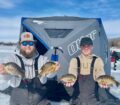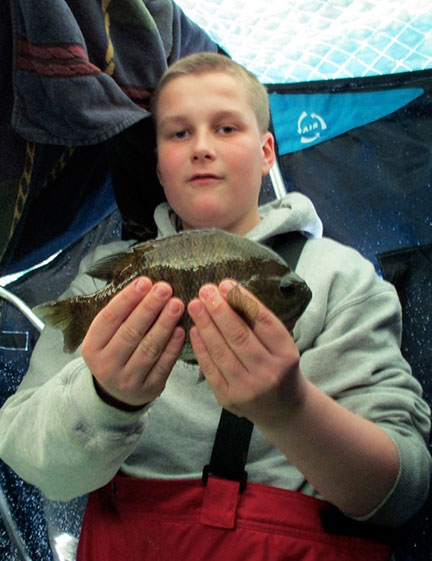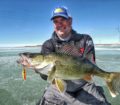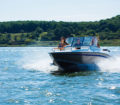By Bob Jensen
Fishing the Midwest Fishing Team
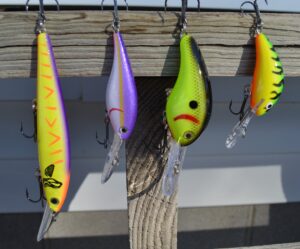
(photo by Bob Jensen) Consider the shape of the bait you’re fishing with and you’ll catch more fish more often.
There are several types of baits that anglers employ in an effort to catch a fish. Crankbaits are a type of lure that can be a very effective fish-catcher. Crankbaits come in several shapes, so once we determine that we want to use a crankbait, we need to decide what shape of crankbait to tie on.
It might not seem like a big deal, but a lure’s shape can have a major impact on how many fish you catch and the species of fish that you catch. Following are some ideas that might be helpful in determining the shape of the crankbait that you put in the water in an attempt to fool a fish.
Kind of a basic but helpful rule-of-thumb when selecting a crankbait is to use a shape that resembles the target species in shape. For instance, walleyes are longer, thinner fish, and they usually eat longer, thinner baitfish. Walleyes like to eat perch and whitefish and other longer thinner baitfish. Not always, but often.
It’s a good starting point. Same with northern pike and muskies. They’re longer thinner fish and often eat longer thinner baitfish. A Lucky Shad is a good example of a walleye shaped bait. It resembles something that a walleye would be willing to eat, and in many places, it’s hard to beat a Lucky Shad for walleyes.
How about largemouth bass. They’re shorter, fatter fish. They like to eat bluegills and shad and such. Shorter, fatter baitfish. Again, not always, but often. Touring bass pro Jay Przekurat says that, depending on the situation, a 6XD crankbait, a shorter, fatter bait is his go-to bait when fishing deep ledges. And when he’s fishing shallow for bass in rivers, he’ll usually have a 1.5 Squarebill, another short fat crankbait, tied on. Shorter, fatter predator fish, shorter, fatter crankbaits. Not always, but often.
However, (there’s always a “however”) in the summer months I spend a lot of time fishing the deep weedline in natural lakes. The deep weedline is where a variety of species swim and eat in the summer. Most of the time I’m just looking for whatever fish wants to eat my bait. I’m not real species specific.
Crankbaits can be very productive along the deep weedline in the summer and the fall. I find that in the summer, I have more action from a wider variety of fish with a shorter, fatter bait. If I was looking specifically for walleyes, I would go with the longer, thinner bait, but since I just want to get bit, it seems that the baits that resemble a bluegill or crappie in shape get bit more often. However again, in the fall, it seems like the longer, thinner cranks will appeal to a wider variety of fish. Shorter, fatter crankbaits have a faster wobble, and that’s better in warm water. Longer, thinner crankbaits have a looser, wider wobble, and that’s better in colder water. Not always, but often.
As with much of fishing, some factors change by season, and it’s the same with the shape of a bait. When largemouth bass are the target, the preferred shape for a largemouth in the spring is often different than the preferred shape in the summer. This might not be so much a shape thing as it is an action thing, because different shapes have different actions in the water. Sometimes we can and do overthink the various factors that go into our lure selection, but just know that lure shape is something that should be thought about when selecting a lure to tie onto the end of your line. If you do, you’re going to catch more fish more often.


